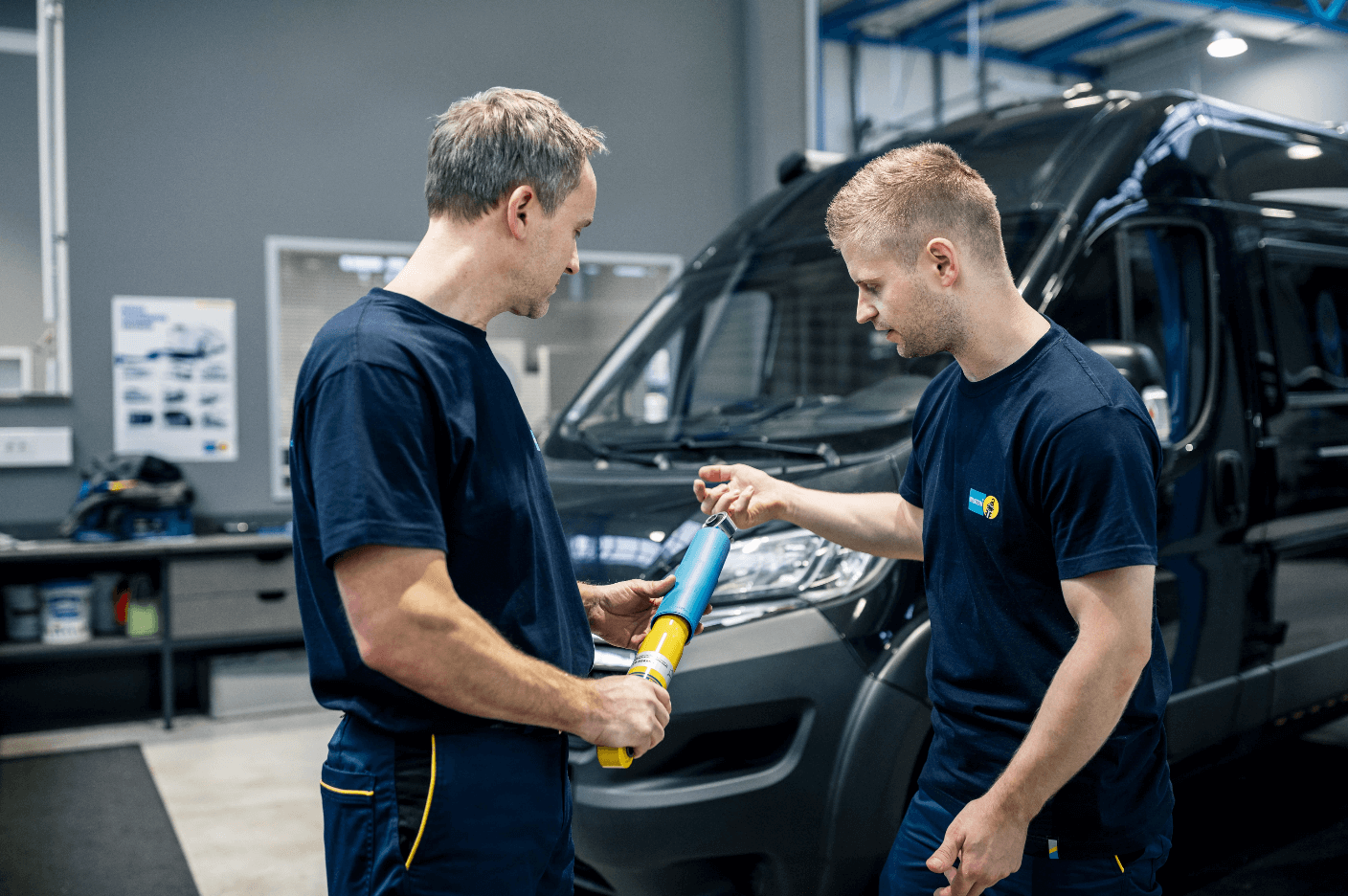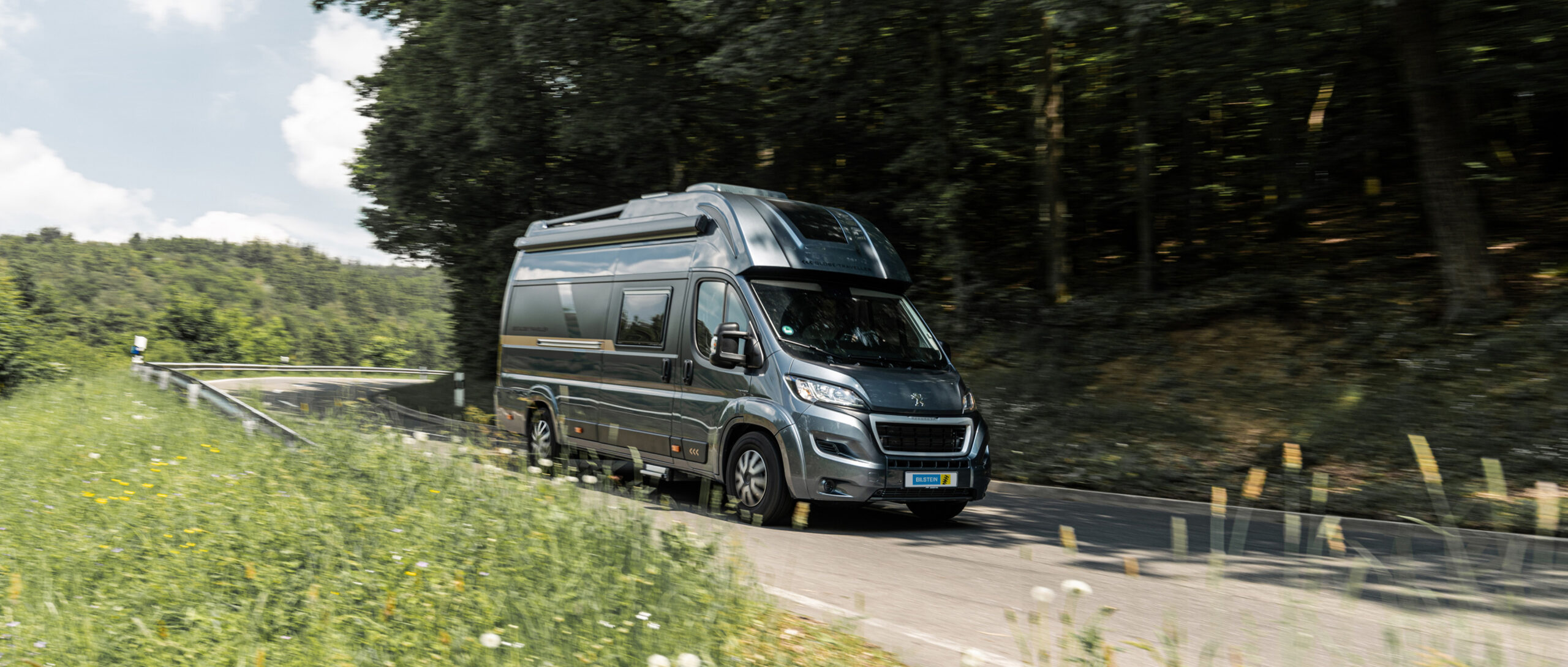

How BILSTEIN Camper shock absorbers for motorhomes work
Simply arrive relaxed on camping holiday
Motorhome owners seem to have been waiting for the B6 camper shock absorbers from BILSTEIN. At least, that’s what the strong customer demand and positive feedback from the trade press suggest. Matthias Becker, who was involved in the development of the product, knows exactly why. After all, he himself is the owner of a camper van based on the Citroën Jumper: “Right from day one, I found the standard driving behaviour difficult. It’s very unsatisfactory, especially when you know how to do it better.”
The basic problem with almost all motorhomes on the market is that they are built on simple van chassis. Consequently, they also “inherit” their suspension setup, and that is anything but ideal for camping applications.
While a normal van is sometimes full, sometimes empty, campers are actually always 75 percent loaded due to the fixed installations. When they’re ready to go on holiday, they’re often around 100 percent full, including luggage, bicycles, and the like. And this is precisely where the new BILSTEIN B6 Camper high-performance shock absorbers shine. Their special setup provides extra safety in crosswinds and in corners thanks to optimum grip and a more intense driving experience with precise handling. At the same time, driving comfort is enhanced. The reduction in driving noise thanks to better damping contributes to this, as does the increase in comfort thanks to optimized rolling behaviour on cobblestones and at railroad crossings.


High-performance shock absorbers for van conversions and semi-integrated motorhomes
“That there would be a great demand for camper shock absorbers was evident to us from regular customer inquiries, but above all from the steadily growing registration figures in the camper segment,” says Becker. Since well over half of all motorhomes in Europe are based on the Fiat Ducato, we initially concentrated on this platform (from model year 2006) as well as the technically closely related Citroën Jumper and Peugeot Boxer van models.
Both van conversions and semi-integrated motorhomes were taken into account during development. However, the BILSTEIN road test is already taking a close look at other vehicle models such as the Mercedes Sprinter and Ford Transit. Not only because delivery times for Ducato and Co. have become very long. Motorhome manufacturers and DIY projects are therefore increasingly considering other vehicle platforms.
No registration necessary
“To ensure that the installation of our suspension solution pays off even for smaller budgets or older vehicles, we focused on good value for money from the outset and opted for a pure damper solution,” Matthias Becker looks back: “Added to this is the fact that we simply see our core competence in this area.”
This decision not only makes the B6 camper upgrade less expensive to purchase than a complete suspension system, but also keeps installation costs lower. The B6 Camper also does not require registration in the vehicle documents – just like the even more capable B6 Camper Advanced.

Two damping characteristics in the BILSTEIN B6 Camper Advanced
And this one brings premium feeling to the world of motorhomes. Matthias Becker explains the advantages of the BILSTEIN B6 Camper Advanced and gives an insight into the development history: “For particularly demanding customers, we wanted to implement an option with different characteristic curves. This is the only way to really master the balancing act between comfort and driving safety. However, an electronically controlled damper was ruled out for cost reasons and because of registration problems. In addition, the installation effort is significantly higher and more demanding. The DampMatic, which was originally developed in its second generation for use in passenger cars, was exactly the right technology for the job. This is because it offers two different characteristic curves and is nevertheless purely mechanical in design.”
The BILSTEIN B6 Camper Advanced is a high-performance shock absorber with amplitude-selective damping. The shock absorber selects one of the two available characteristic curves completely automatically on the basis of the vibrations transmitted by the road. Depending on the strength, a bypass opens or closes, which changes the resistance for the oil in the damper.

Motorhomes now drive more comfortably, safely and precisely
BILSTEIN PROFESSIONAL BECKER IS ENTHUSIASTIC “I was immediately impressed by the result in the BILSTEIN road test, and after the product was released, my camper van was one of the first to have the Advanced installed.”
Becker continues: “This ingenious system enables soft damping at low damper piston speeds and firm damping at high speeds. Compromises in setup are thus a thing of the past. I can cruise comfortably with the B6 Camper Advanced and in the next moment safely avoid a suddenly appearing obstacle. The damper also does great in crosswinds on the highway.”
Development and fine-tuning were extremely complex. “At the Nürburgring and in our own test centre at the Papenburg test track, our drivers spend thousands of hours checking how the suspension components behave in a wide range of driving situations. A wide variety of vehicle configurations are also taken into account. For example, the Ducato family is divided into light and heavy chassis, where not only the design of the springs is different but also the space available for the shock absorbers varies. There are therefore constellations in which the Advanced is only used on the front axle and the normal B6 Camper at the rear. What’s more, in addition to van conversions, we have of course also taken partially integrated motorhomes into account,” explains BILSTEIN expert Becker.

More Camper shock absorbers already in the pipeline
The next challenge are the fully integrated models. Here, things get even more complicated in terms of dimensions and weights. In addition, special frames from third-party manufacturers are also very common here alongside the standard chassis. It should also be noted that some models are already fitted with air or air-supplementary suspension ex works, for which conversion would not make sense.
At the same time, BILSTEIN is therefore also looking around a class smaller: camping buses à la VW T6.1 are another possible application. Here, Matthias Becker has a tip on how driving performance can already be improved: “The normal BILSTEIN B6 is already available as an upgrade solution for some vehicles. Although it has not been particularly optimized for campers, it still offers enormous advantages in terms of handling. Conversely, the existing BILSTEIN B6 Camper and B6 Advanced are also a recommendation for some “craftsmen’s cars”. If the vehicle is always heavily loaded, for example due to fixtures such as tool cabinets, this constellation makes sense.”

